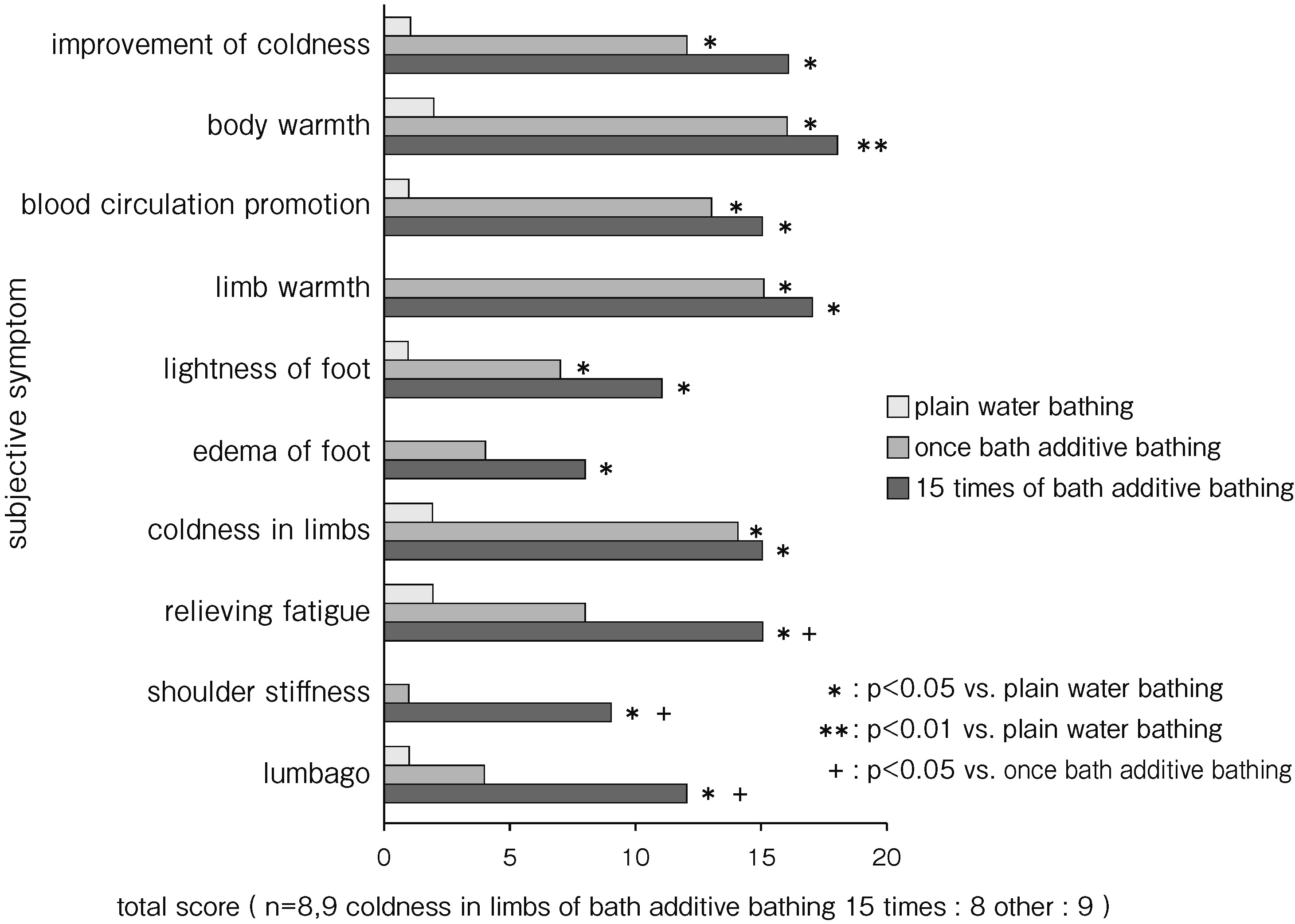- 著者
- Yasuhiro HOSAKI Nobuyoshi SHIOZAWA Kozo ASHIDA Satoshi WATANABE Taichi ISHIZAWA Mitsuo TSUNAKAWA Shingo YANO Fumihiro MITSUNOBU
- 出版者
- The Japanese Society of Balneology, Climatology and Physical Medicine
- 雑誌
- 日本温泉気候物理医学会雑誌 (ISSN:00290343)
- 巻号頁・発行日
- vol.77, no.5, pp.554-555, 2014-08-29 (Released:2015-01-15)
Purpose: We have previously reported the physiological and biochemical effects of bath salts. In this study, we used bath additive containing artificial carbon dioxide and sodium chloride (S bath additive), and the acute effects of bathing once with S bath additive and chronic effects of daily bathing with S bath additive for 15 consecutive days were compared with the effects of bathing once in plain water. Improvement in 10 symptoms was investigated using a 5-point verbal rating scale (VRS).Methods: Nine patients aged 51-82 years (mean, 66.6 years) with cold intolerance and lower leg pain were treated with balneotherapy. Whole-body bathing at 40°C was performed for 10 min daily (day 1, bathing in plain water; days 2-16, bathing with S bath additive). On days 1, 2, and 16, changes in patient’s subjective symptoms were evaluated using a VRS ranging from -1 to +3.Results: Compared with bathing once in plain water, bathing once with S bath additive was improvement of coldness, body warmth, blood circulation promotion, limb warmth, lightness of foot, and coldness in limbs. Daily bathing with S bath additive for 15 days significantly improved all symptoms compared with bathing in plain water. A comparison between single and daily bathing with S bath additive showed that relieving fatigue and lumbago were significantly improved after consecutive bathing, demonstrating the benefits of long-term usage.Discussion: Bathing once with S bath additive had acute effects on symptoms associated with peripheral circulation, such as coldness in limbs, body warmth, and limb warmth. Daily bathing with S bath additive improved bone- and joint-related symptoms, such as lumbago and shoulder stiffness, demonstrating that the chronic effects of S bath additive differ from the acute ones. These results are consistent with previous studies on natural hot springs which found that the efficacy of short-term treatment was distinct from that obtained after >2 weeks of treatment.
